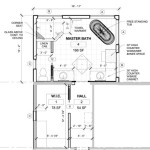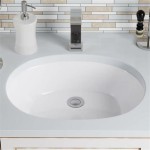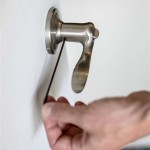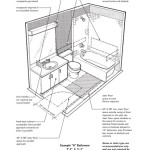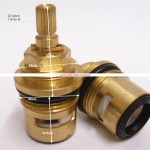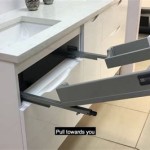How To Replace a Bathroom Fan Motor Only
Bathroom exhaust fans play a vital role in removing excess moisture and odors, preventing mold growth and preserving the integrity of bathroom fixtures. Over time, the fan motor can wear out, leading to reduced performance or complete failure. Replacing the entire fan assembly can be a complex and costly endeavor. However, in many cases, it's possible to replace only the motor, saving both time and money.
Before beginning any electrical work, safety should be the paramount concern. Turn off the power to the bathroom fan circuit at the main electrical panel. Verify the power is off by using a non-contact voltage tester on the fan's wiring.
The next step involves accessing the existing fan motor. Most bathroom fans are located within the ceiling and accessed through a removable cover plate. Locate the cover plate and carefully remove it. This may involve loosening screws or clips, depending on the fan model. Once the cover plate is removed, the fan housing and motor will be visible.
With the fan housing exposed, it's essential to document the wiring configuration. Take clear photographs or draw a diagram showing the connections between the fan's wiring and the house wiring. This will be crucial for correctly wiring the new motor.
Most bathroom fan motors are secured to the fan housing with screws or clips. Carefully remove these fasteners to detach the motor from the housing. Depending on the fan model, the fan blade may need to be removed first. This is typically accomplished by loosening a setscrew or nut located at the center of the fan blade.
Once the old motor is removed, take note of its specifications, including voltage, wattage, and RPM (revolutions per minute). This information is usually printed on a label affixed to the motor housing. The replacement motor must have compatible specifications to ensure proper operation and avoid electrical hazards. It's advisable to purchase a replacement motor specifically designed for the fan model, if possible. This ensures compatibility and simplifies the replacement process.
If an exact replacement motor is unavailable, a universal replacement motor can often be used. When selecting a universal motor, pay close attention to the mounting bracket configuration and shaft diameter to ensure it will fit the existing fan housing and blade. Adapters may be available for slight variations in shaft diameter.
With the new motor in hand, begin the installation process by carefully attaching the fan blade to the new motor shaft. Secure the blade with the appropriate setscrew or nut, ensuring it is tightened sufficiently to prevent slippage.
Next, position the new motor within the fan housing and secure it using the screws or clips removed earlier. Take care not to overtighten these fasteners, which could damage the motor housing.
Refer to the wiring diagram or photographs taken earlier to connect the house wiring to the new motor. Ensure the wires are securely connected and that the wire nuts are properly tightened.
Once the wiring is complete, carefully tuck the wires into the fan housing and reinstall the cover plate. Secure the cover plate with the screws or clips.
After the installation is complete, restore power to the bathroom fan circuit at the main electrical panel. Test the fan operation by turning the fan switch on. The fan should operate smoothly and quietly. If the fan does not operate correctly, immediately turn off the power at the electrical panel and double-check all wiring connections and motor installation steps.
Replacing a bathroom fan motor can be a manageable DIY project for individuals with basic electrical and mechanical skills. However, if there is any uncertainty or discomfort with working with electrical components, it's always recommended to consult a qualified electrician.
Regular maintenance, including periodic cleaning of the fan blades and housing, can extend the lifespan of the bathroom fan motor and prevent premature failure. This can involve vacuuming dust and debris from the fan blades and wiping down the housing with a damp cloth.
Proper ventilation is crucial for maintaining a healthy and comfortable bathroom environment. By addressing a failing bathroom fan motor promptly, one can prevent moisture-related problems and ensure the continued functionality of this essential bathroom component.

How To Replace An Exhaust Fan Motor Ace Hardware

How To Replace A Bathroom Fan Motor Quick Diy Approach

Bathroom Fan Motor Repair And Replace

How To Replace A Bath Fan Motor

How To Replace A Bathroom Fan Motor Quick Diy Approach

How To Replace A Bathroom Fan Motor Quick Diy Approach

How To Replace An Exhaust Fan Motor Ace Hardware

How To Replace A Bathroom Fan Motor Quick Diy Approach

How To Replace And Install Broken Bathroom Exhaust Fan Motor Easy Diy Fix Noisy Rattling

How To Replace A Bathroom Fan Motor Quick Diy Approach
Related Posts
